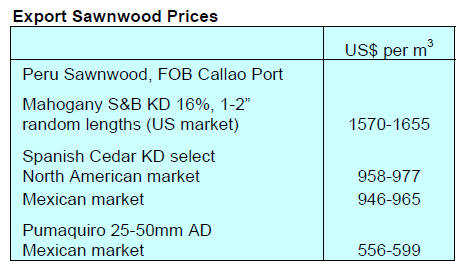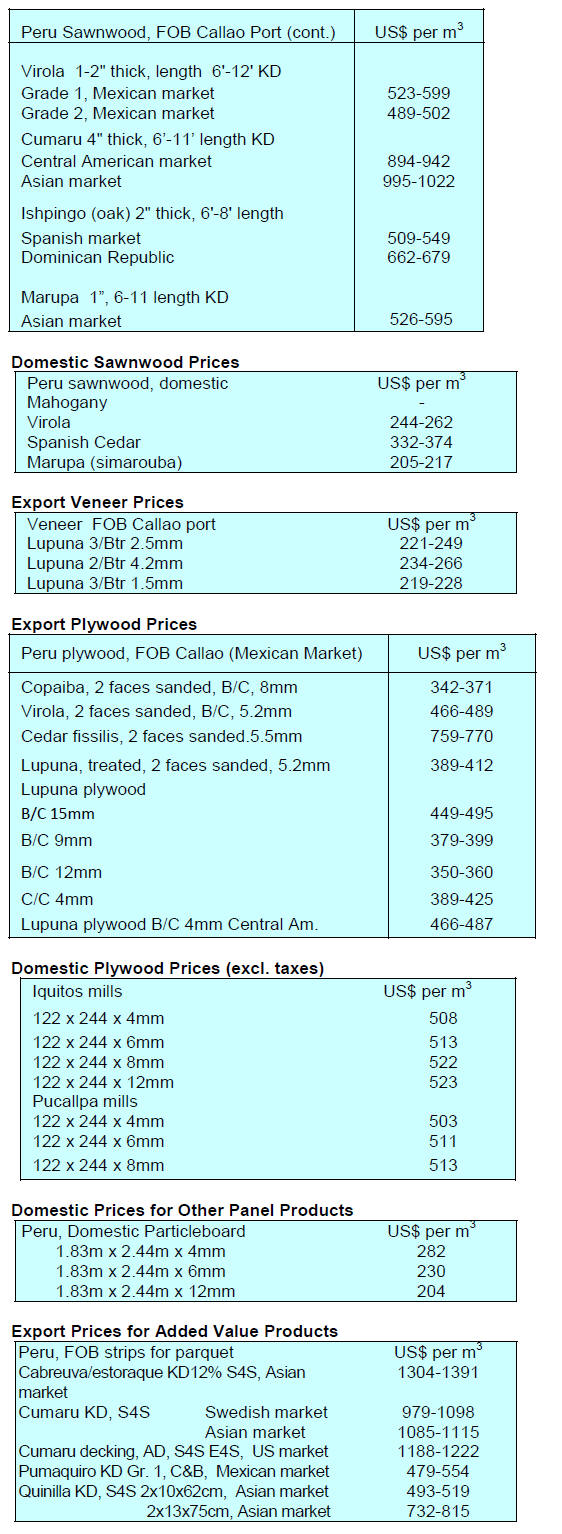2. GHANA
‘Youth in Afforestation Programme’ launched
While visiting Kumasi Ghana’s President, Nana Addo
Akufo-Addo, launched the ‘Youth in Afforestation
Programme’ (YAP) through which some 20,000 youths
(about half of those which applied to participate) will be
engaged under the programme.
This programme is part of the government’s commitment
to restore the depleted forest cover and fulfil a campaign
promise to restore Ghana’s forests. The Youth Programme
will initially run for 2 years as a phase 1.
However, the President was confident the programme
would be a success and would therefore be extended. In
commenting on the initiative the outgoing Minister for
Lands and Natural Resources, Mr. John Peter Amewu,
who was deeply involved in developing the programme
said this will offer youth an opportunity to contribute to
national well-being. Mr. Amewu said the Ministry would
soon introduce a policy to encourage farmers to plant
trees.
The CEO of the Forestry Commission (FC), Mr. Kwasi
Owusu Afriyie, said the young people involved in the
programme received training from FC staff on nursery and
planting procedures. He mentioned that a robust
monitoring system will be in place to monitor progress.
Mr. Kwaku Asomah-Cheremeh has been appointed as the
new Minster of Lands and Natural Resources.
Rail network rehabilitation will improve trade
Ghana has plans to fully rehabilitate the national rail
network according to Mr. Joe Ghartey, Minister for
Railways Development.
This, said the Minister, would provide companies with an
opportunity to raise competiveness and would help expand
internal distribution.
Nigeria urged to join Continental Free Trade Area
Ghana’s President has urged Nigeria to join the regional
free trade initiative to further expand intra-Africa trade.
While visiting Nigeria, President Akufo-Addo said the
sheer size of Nigeria’s economy and its huge purchasing
power could be a driver of regional market expansion.
Nigeria has a population of around 180 million, about half
of the total population of ECOWAS countries and is the
largest market in Africa. Nigeria is an importer of Ghana’s
wood products.
In March this year The Brookings Institution a nonprofit
public policy organization based in Washington produced
a paper entitled “Strengthening regional value chains:
What’s the role of the African Continental Free Trade
Agreement?”.
This says “Current interlinkages between African
economies are insufficient to accelerate economic growth
among regional economic communities including the
Common Market for Eastern and Southern Africa
(COMESA), East African Community (EAC), and
Southern African Development Community (SADC).
Extra-regional trade has historically outpaced intraregional
trade, often by 90 percent. Similarly, Africa lags
behind much of the world in intra-regional integration.”
See:
https://www.brookings.edu/blog/africa-infocus/
2018/03/21/strengthening-regional-value-chains-whats-therole-
of-the-african-continental-free-trade-agreement/

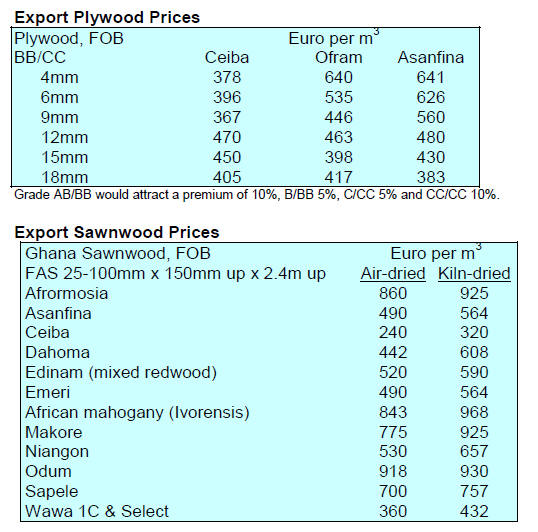
3.
MALAYSIA
Reforestation grant
The domestic media (Star Newspaper) reports the Water,
Land and Natural Resources, Dr. Xavier Jayakumar the
newly appointed Minister in the federal government, as
saying a massive reforestation programme is to be
undertaken. The minister reported that a grant from
Norwegian government has been offered to a local NGO
to undertake some reforestation.
Dr. Xavier said that currently, 52% of Malaysia was under
forest cover but if Sarawak and Sabah were excluded from
the calculation the forest cover for Peninsular Malaysia
alone would not extend to even 50%. In particular the
three Peninsular Malaysia states – Kedah, Pahang and
Kelantan have an urgent need for reforestation.
Sabah task force for a more sustainable domestic
manufacturing base
Deputy Sabah Chief Minister, Wilfred Madius Tangau,
called for the downstream and upstream timber industries
to work together to release the potential for production of
high value products as this would create jobs and boost
State revenues.
The Sabah State government has established a task force
to prepare a strategy for a more sustainable domestic
manufacturing base. The task force would look at the
temporary log ban to offer suggestions on restructuring the
timber sector to better utilise State resources.
New feature for Malaysian Furniture and Furnishings
Fair 2018
The Malaysian Furniture and Furnishings Fair (MF3)
which was held in early August is now premier home expo
attracting over 120 exhibiting companies displaying more
than 300 well-known brands.
MF3 was organised by the Kuala Lumpur and Selangor
Furniture Association (KSFA). This year a feature was the
Wood and Lifestyle Fair – arranged jointly by KFA and
Malaysian Timber Industry Board (MTIB).
MF3 offered the opportunity for the Tanggam Design
Centre (TDC), an initiative under MTIB for young
designers, who won ‘The Best Designers’ award at the
2017 Salone Satellite Show in Milan.
Mangroves forests declining
The Forest Research Institute of Malaysia recently updated
date on mangroves in Malaysia.
Sabah has some 61% of the total area of mangroves in
Malaysia which extend over around 630,000 ha. Sarawak
has 22% of the total area with the balance being in
Peninsular Malaysia.
Since 1990 a total of around 20,000 ha. or about 3% of the
mangrove forest was lost especially in the areas outside
the permanent forest reserves or within state-land. The
main reason for the loss in mangrove cover was
conversion to other land uses. Other contributing factors
such as coastal erosion and pollution also affected the
mangroves.
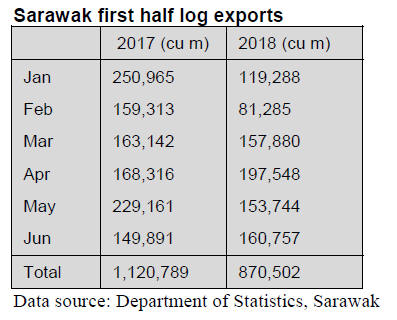
July plywood prices
Plywood traders based in Sarawak reported the following
export prices:
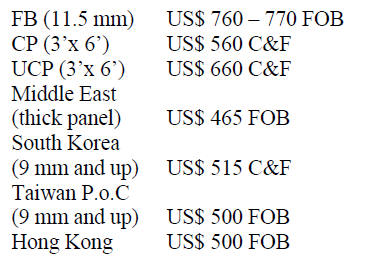
4.
INDONESIA
Exporters urged to repatriate
all export earnings
Rosan Roeslani, chairman of KADIN the Indonesian
Chamber of Commerce and Industry, said that Chamber
members understand the benefits to the country of
repatriating all of their export earnings rather than holding
some off-shore.
Rosan estimated that at the moment up to 20% of earnings
are commonly held off-shore but he said it is best for the
economy if all is exchanged into local currency. The
debate on remittances was held between KADIN,
entrepreneurs from various fields, various ministries, the
Financial Services Authority and Bank Indonesia.
Rosan said KADIN would work towards ensuring a
greater portion of export earnings are returned to
Indonesia.
Import restrictions will be a positive for wood sector
The government plan to restrict imports of some items
could bring advantages to local manufacturers of paper,
plastic, wood products, palm oil and certain
petrochemicals says a local analyst.
Muhammad Nafan Aji Gusta Utama, from the securities
firm Binaartha Sekuritas, said the government plans to
target around 500 commodities which, in the face of a
weaker rupiah and global trade volatility, is an appropriate
move.
In related news, the Ministry of Finance is preparing, in
cooperation with the Taxation Directorate General, the
Customs and Excise Directorate General and the Fiscal
Policy Agency, a draft regulation to curb imports in
response to rise in the country’s current account deficit.
State owned forestry enterprise sees profits rise
Perhutani, a state-owned enterprise in Indonesia which has
the duty and authority to carry out planning, management,
exploitation and protection of forests in its working area,
recorded a positive financial performance in the first half
of 2018.
The state-owned forestry company had a revenue of Rp1.8
trillion, a 26% increase from the same period last year out
of which profit amounted to Rp469 billion, up 63% from
2017.
A spokesperson for Perhutani said the company is sure it
can achieve revenues of around Rp3.8 trillion in 2018.
See: https://industri.kontan.co.id/news/perhutani-mengejarpendapatan-
rp-38-triliun-tahun-ini
Major effort to help SMEs
The government continues with its efforts to boost wood
product exports. One thrust of this is the support to SMEs
in securing timber legality certification through the SVLK.
Specifically, the government has simplified SVLK
certification and allows extension of the validity period. It
also subsidises certification fees.
Coordinating Minister for Economic Affairs, Darmin
Nasution, said the ultimate aim is to make SVLK
certification free for SMEs.
The Ministry of Environment and Forestry has indicated
that it will support SVLK certification for 346 industrial
small and medium industries (SMEs) and certification for
over 3,500 community forest units.
See:
https://www.republika.co.id/berita/ekonomi/korporasi/18/08/24/p
dyptv383-pemerintah-akan-bebaskan-biaya-sertifikat-legalitaskayu
In related news, the Ministry of Environment and Forestry
is encouraging SMEs to export directly rather than use the
services of brokers as in this way profits will improve.
According to Rufi'ie, Director of Forest Products
Processing and Marketing in the ministry, SMEs need to
be encouraged to raise competitiveness in the international
market so they are better able to survive market volatility.
US$8 billion wood product exports in first 8 months
Rufi'ie has announced that in the first eight months of this
year Indonesia's wood product exports totaled US$8.06
billion.In light of this performance he expressed optimism
that the export target of US$12 billion is achievable. The
good performance was due, said Rufi'ie, to competitive
pricing, good designs and products that are verified legal.

5.
MYANMAR
DFID set to realign its
programme in Myanmar
Analysts in Myanmar report that the UK Department for
International Development (DFID) has signalled its
intention to suspend support for activities related to
preparations for the VPA with the EU. DFID has said it
intends to reshape its programme in Myanamr to focus on
inclusion, social cohesion and equality.
This announcement came just as there was to be a
transition from the Interim Task Force (ITF) to a Multi
Stakeholders Group (MSG) which would lead to the
negotiation phase of VPA Process in Myanmar.
Analysts write that this decision is a heavy blow to
industry as it struggles to establish its national timber
legality verification framework.
For more see:
https://assets.publishing.service.gov.uk/government/uploads/syst
em/uploads/attachment_data/file/723121/Burma-July-2018.pdf
News round-up
 Parliament has approved the new Forest Law
Parliament has approved the new Forest Law
which will be on the statute books once signed by
the President. The existing law dates back to
1902 and was revised 1992.
 The Myanmar Timber Enterprise plans to
The Myanmar Timber Enterprise plans to
establish a Timber Industry Complex on land
previously used as log depot for export logs.
Forestry Minister, Ohn Win, recently inspected
the site and indicated the ministry will carefully
study the proposal.
 The Forest Department has issued the terms and
The Forest Department has issued the terms and
conditions that investors in plantations must
follow. A 30 year lease, extendable for 20 years,
will be offered. The terms require that at least 50
trees per acre should be planted and that poles,
posts and sawnwood from the plantation can be
exported. There will be a 10% tax for payment
for ecosystem services imposed.
 Over the past four months, 2,149 people were
Over the past four months, 2,149 people were
arrested for illegal activities in the natural forest.
To combat the illegal logging informers are
rewarded for information leading to arrests of
suspects.
 According to the Ministry of Commerce,
According to the Ministry of Commerce,
Myanmar’s overseas trade for the current
financial year was over US$10 billion with a
trade deficit of US$1.1 billion. In the first quarter
fiscal 2018, (April to June 2018) trade in forest
products is totaled US$47 million.
 Analysts write that timber exporters face two
Analysts write that timber exporters face two
main challenges, first, the available volumes of
teak and the log quality are declining but still
prices for logs continue to rise and second, the
pressure from the EU Competent Authorities for
legality verification is getting tougher and
tougher. According to some exporters they have
been informed by German Importers that if the
documents are not in order it is possible that
shipments will be returned.

6. INDIA
Woodbased
panel price index declines in June
India’s official wholesale price index for all commodities
(Base: 2011-12=100) for July 2018 released by the Office
of the Economic Adviser to the government rose to 119.7
in July from 119.2 in June.
The annual rate of inflation, based on monthly WPI in July
2018 was 5.09% compared to 5.77% for the previous
month.
The index for ‘Manufacture of Wood and of Products of
Wood and Cork group rose almost 1% in July due to
mainly to higher price of paperproducts.
The press release from the Ministry of Commerce and
Industry can be found at:
http://eaindustry.nic.in/cmonthly.pdf
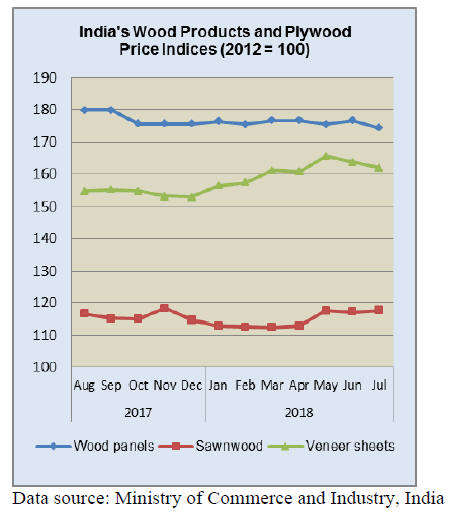
Industrial output at 5-month high in June
Industrial production was at a five-month high in June
according to a press release from the Ministry of Statistics
and Programme Implementation. All three major sectors,
manufacturing, mining and electricity expanded output.
The cumulative growth in these three sectors during the
April-June 2018 period over the corresponding period of
2017 has been 5.4%, 5.2% and 4.9% respectively.
Analysts suggest the GDP growth is expected to have
topped 7.5% in the first quarter of the current financial
year. Commenting on the performance of the sectoral
growth trends, Chandrajit Banerjee, Director General,
Confederation of Indian Industry, said this reflects steady
progress in economic growth and is encouraging as there
has been a perceptible increase in the share of sectors
recording higher growth.
http://www.mospi.gov.in/sites/default/files/press_release/iip_PR
_10aug18_0.pdf
https://www.cii.in/NewsRoom.aspx?enc=SO0wa+TYDvk3FXK
FO1bn1Q==
New report ‘India’s Real Estate Milestones - A 20-year
Narrative’
The Confederation of Indian Industry (CII) in association
with JLL, one of India’s top real estate firms, have
launched a report ‘India’s Real Estate Milestones A 20-
year Narrative”.
The press release launching the report says the main
features and agents of change in the real estate sector over
past two decades are discussed. Further, the report
highlights the trends and opportunities as the sector enters
a new phase of growth.
The press release also says the first half of 2018
saw corporate leasing activity rise by a 54% in compared
to the same time last year. This trend, driven by large
technology companies co-working offices, financial
services and global in-house data centres is a reflection of
the current thriving business environment in India.
http://www.jll.co.in/india/en-gb/news/292/indian-real-estatemakes-
an-emphatic-come-back-in-2018-cii-jll-india-report
Better coordination between agencies needed to tackle
illegal agarwood trade
In late July the Thane Division of the Maharashtra Forest
Department seized 75kg of agar wood as attempts were
made to smuggle the wood. Over the past seven months 10
people have been arrested for attempting to illegally
export agar wood to the Middle East.
The Deputy Conservator of Forests in Thane, Jitendra
Ramgaokar, said there needs to be better coordination
between agencies to tackle the illegal trade. “The only way
out is creating awareness, capacity building and interdepartmental
coordination among state governments,
forest officials, Directorate of Revenue Intelligence,
Customs and Central Reserve Police Force,” he said.
Plantation teak
Demand for imported plantation teak logs has risen on the
back of firmer domestic demand.
However, over the past months the US dollar has
strengthened against the rupee which has pushed up
landed costs. To maintain a viable business prices in the
local market have risen 8-10 %. Importers are still
struggling to maintain trade without the full backing of the
banks which are still not offering full credit facilities.

Locally sawn hardwood prices
With the domestic housing market showing firm growth
the demand for wood products has improved. Because of
the weak rupee import costs have risen such that traders
have had to raise prices and the market has accepted the
price increases.
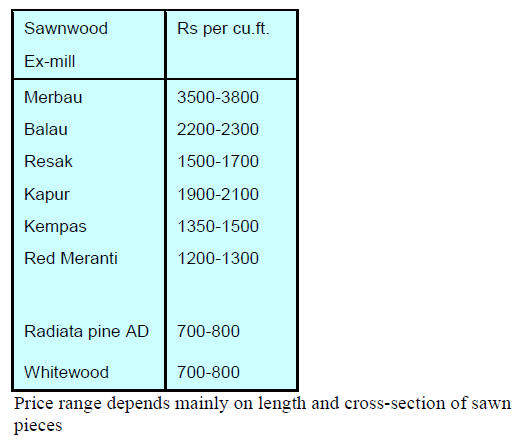
Myanmar teak
Improved activity in the construction and house building
sector has begun to drive up demand for Myanmar teak
and the price increases introduced at the beginning of
August are holding.
However, analysts write that as stocks of Myanmar teak
purchased before the log export ban in Myanmar further
rise in prices are likely.
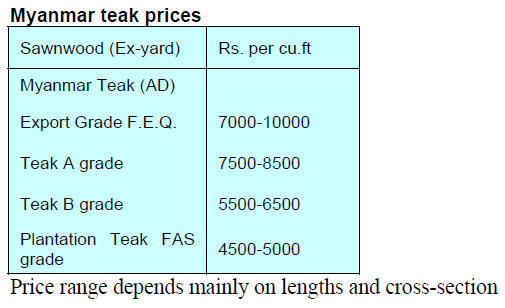
Locally sawn hardwood prices
The price increases for imported KD sawnwood
introduced in early August are holding.
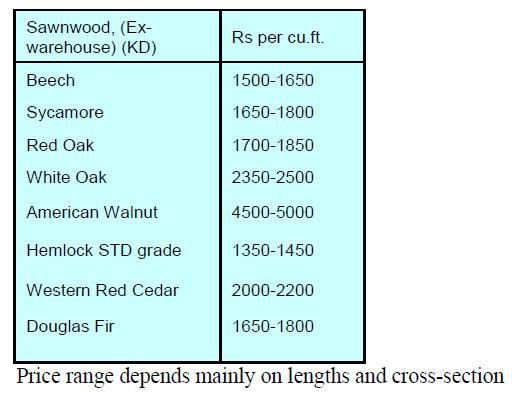
Plywood up-date
The domestic market has absorbed the plywood price
increases announced at the beginning of August but the 8-
10% rise leaves manufacturers with only a small margin.
Against the backdrop of rising demand manufacturers are
waiting for the opportunity to introduce a further increase
of by 4-5%.
However, falling prices for MDF and particleboard due to
low cost imports and increased local production may limit
the chances of an early rise in plywood prices.

7. BRAZIL
Good forest management assures
natural forest
conservation
Representatives from the National Forum of Forestry
Activities (FNBF) and the Center for Timber Producers
and Exporters of Mato Grosso State (CIPEM) discussed
various aspects of logging in Brazil during the 106th
National Meeting of the Thematic Council on
Environment and Sustainability (COEMA) of the National
Confederation of Industry (CNI), held in Acre in early
August.
CIPEM emphasised that through good forest management
of natural forests conservation can be assured. The forestry
sector in Brazil supports around 7 million direct and
indirect jobs and annually contributes about 1% of Brazil's
with revenues of more than US$60 billion.
Management of the natural forest produces about 26
million cubic metres of logs annually representing about
10% of global production from natural forests which puts
Brazil second in world ranking after the United States.
Given the huge area of Brazil’s tropical forests with
management potential output could be much higher
according to CIPEM. The Brazilian Ministry of the
Environment has said almost 70% of the natural
vegetation cover in the Amazon, which covers about 3
million square kilometers, has productive capacity.
As pointed out by CIPEM, natural forest owners wishing
to harvest have to adhere to government regulations and
follow approved management plans but many complain
about low financial returns so tend to consider alternative
land uses which offer greater returns.
Suspected fraudulent forest inventories uncovered
An investigation conducted by the Tropical Forestry
Laboratory of the Luiz de Queiroz College of Agriculture,
University of São Paulo, suggests possible fraud by some
companies logging in the Amazon. Even as deforestation
rates slow researchers warn of the methods used to
disguise the origin of logs.
According to the University, the volumes of high-value
timber species in logging areas are being overstated in
order to ‘legalise’ illegally harvested logs from outside the
licensed areas. Researchers suggest that systems need to
be put in place to improve transparency and to monitor
harvesting plans and yield estimates.
See:
http://advances.sciencemag.org/content/4/8/eaat1192
Export update
In July 2018, the value of Brazilian exports of wood-based
products (except pulp and paper) declined almost 7%
compared to July 2017, from US$229.6 million to
US$214.0 million.
The value of pine sawnwood exports increased about 8%
year on year in July while the volume of exports dropped
13% over the same period (from 187,200 cu.m to163,400
cu.m).
Tropical sawnwood exports also fell from 32,500 cu.m in
July 2017 to 30,800 cu.m in July 2018. Export values also
declined from US$14.5 million to US$13.7 million over
the same period.
Brazil’s pine plywood exports slowed in July from a year
earlier dropping almost 3% from US$49.0 million to
US$47.8 million. There was a corresponding decline in the
volume of pine plywood exports from 172,600 cu.m to
136,200 cu.m, an over 20% drop.
A decline was also recorded in July exports of tropical
plywood. Export volume fell 17% year on year from
14,000 cu.m (US$5.4 million) in July 2017 to 11,600 cu.m
(US$5.1 million) in July 2018.
On a positive note the value of wooden furniture exports
rose sharply in July increasing from US$40.8 million in
July 2017 to US$55.4 million in July 2018.
Forestry sector investors discuss 20x20 Initiative
Representatives of Brazilian and international investment
funds and entrepreneurs from the Brazilian forestry and
agroforestry sector recently met in São Paulo. The meeting
discussed the World Resources Institute 20x20 Initiative
which aims to connect forestry projects in the country with
investors so as to achieve land restoration, create a low
carbon economy and generate employment.
See:
http://www.wri.org/our-work/project/initiative-20x20
The São Paulo meeting was a first step in attracting
investment to Brazil. Six investment funds were briefed on
Brazilian private sector projects that, together, would
enable the restoration and reforestation of 17,000 hectares
in six different States.
The projects presented were subject to a preliminary
analysis by the WRI Brazil team through the VERENA
project “Economic Valuation of Reforestation with Native
Species” which seeks to demonstrate the economic
viability of reforestation with native species.
Growth in container traffic out of Santa Catarina
Between January and June 2018 exports of the forest
products from Brazil grew 34% compared to the same
period of the previous year, totaling US$5.5 billion.
According to the Brazilian Tree Industry (IBÁ), which
represents the production chain based on planted forests,
greater demand, especially from China, was decisive in
achieving growth which was also helped by improvements
in international prices driven by the appreciation of the US
dollar.
A company based in the State of Santa Catarina in the
south of Brazil has seen a 42% growth in container traffic
in the first half of 2018 with all major destinations, North
America, Europe and Asia recording increased traffic.
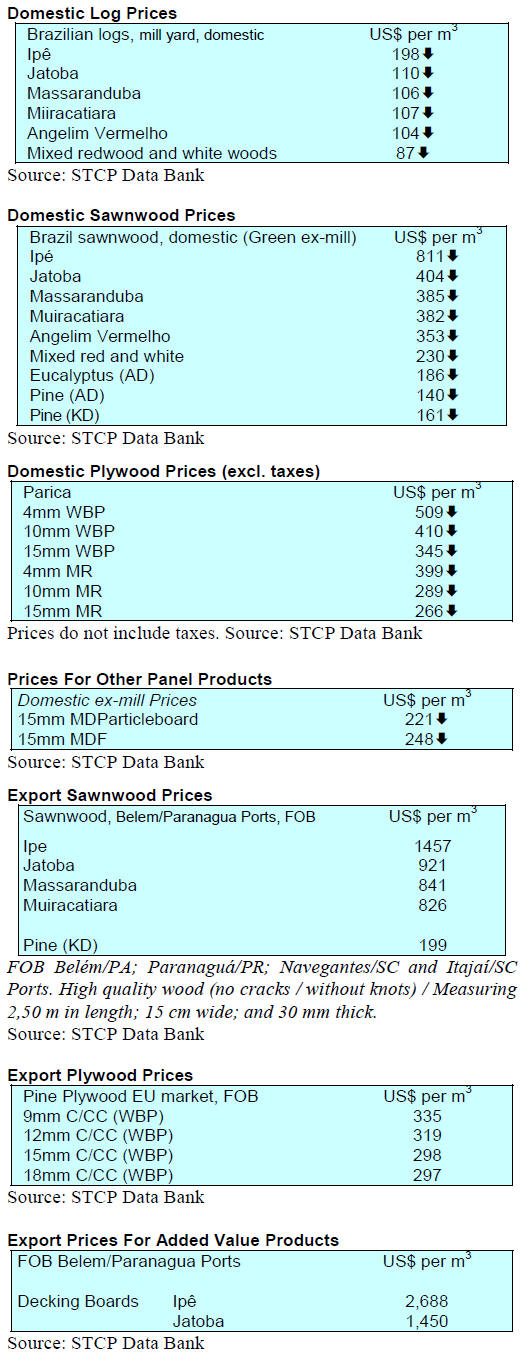
8. PERU
Exports to China dipped in May
According to the latest data provided by the Association of
Exporters (ADEX), as of May 2018, exports of Peruvian
wood products were valued at US$50.8 million FOB, an
increase year on year of 6.2%.
China continues to be the main export market for the wood
products sector, but in May the value of exports dropped
14% year on year but still accounted for just over 40% of
all wood product exports.
Mexico was the second largest market accounting for
almost 12% of exports and the United States was the third
placed market. Exports to the US increased 11% year on
year in May 2018.
Sawnwood exports in the period January to May 2018
were worth US$10 million FOB, up 23% from a year
earlier.The main market sawnwood was the Dominican
Republic (a 33% share) followed by China (a 23% share).
In this same period, Mexico ranked third with an 18%
share of exports.
Inventory of forest plantations in Cajamarca and
Cusco
An inventory of forest plantations on private farms and in
peasant communities found that the most abundant species
are eucalyptus (Eucalyptus globulus) and pine (Pinus
patula).
Cajamarca was the first region where general information
was collected. In this region six species of pine,
Eucalyptus globulus and Cupressus macrocarpa were
recorded. The most abundant species was Pinus patula.
The inventory in Cajamarca found little evidence of sound
forest management.
A similar survey in Cusco found that Eucalyptus globulus,
Escallonia resinosa, Pinus radiata and Alnus acuminata
were the most abundant species. The volume of
Eucalyptus globulus was estimated at 452,345 cu.m.
